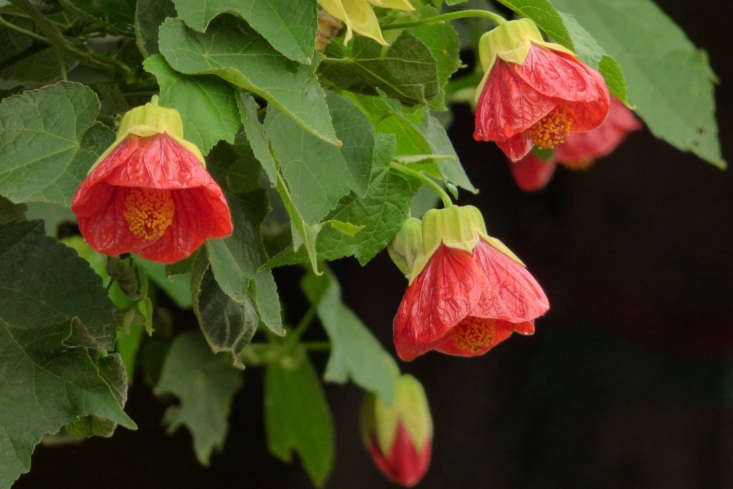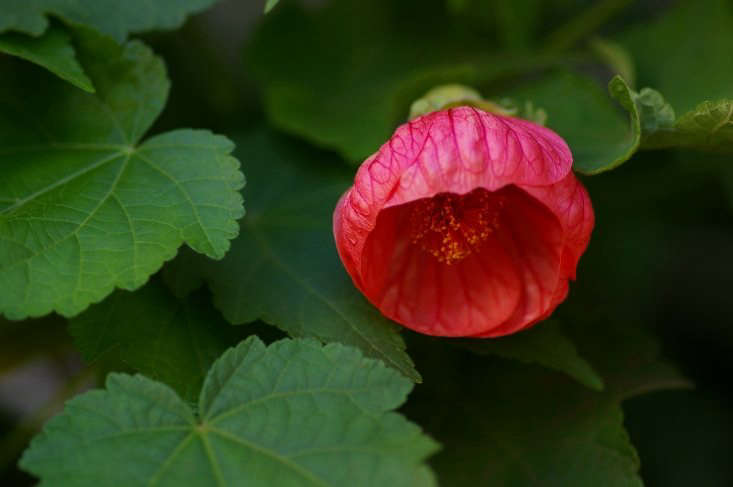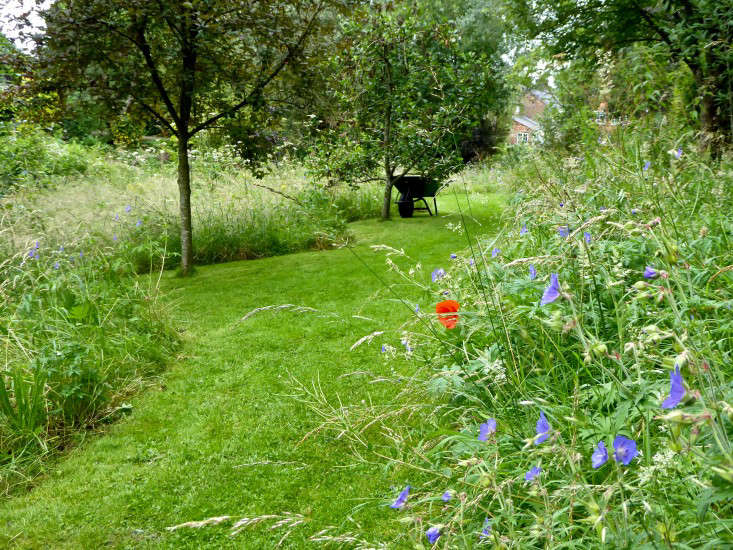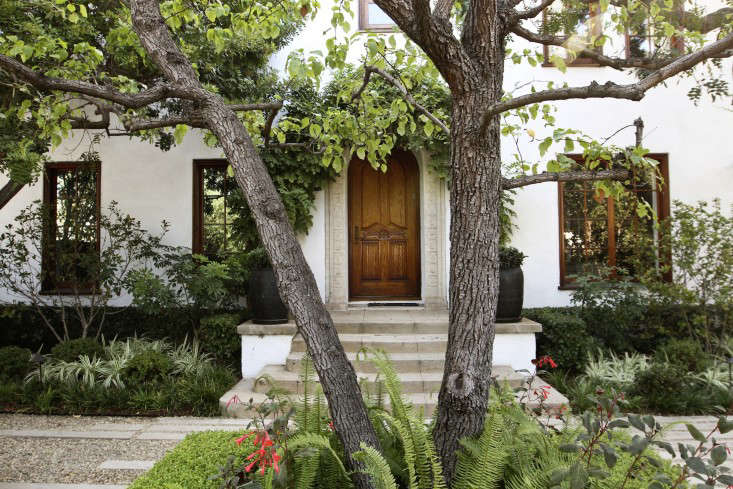Flowering Maple, Abutilon: “Paper Bells”
I am serious when I say that I adore abutilon flowers, for the way they start as closed parasols and then unfurl into pendulous crepe-papery bells. I am also serious when I say that despite my adoration, I always give them a second thought before planting them in my clients’ gardens; it’s important to make sure this is the right plant for the right spot.
Perennial in warm climates, abutilons are stunningly ornamental evergreen shrubs with large lobed leaves that resemble maples. With fantastic dreamy-colored, drooping, lantern-like flowers, abutilons bloom in the sweetest shades of yellow, orange, red, pink, and white. Yellow or white variegated-leaf varieties are also extremely attractive and can brighten up a partially shady area.
Please read on to learn the secrets of planting abutilon:

While there are some native abutilons such as California’s Abutilon palmeri, most are sold as Abutilon x hybridum, indicating that they are hybrids. Besides coming in a variety of flower colors, abutilons also come in a range of sizes; there are compact (dwarf) forms growing to 1.5 feet high that are perfect for hanging baskets or containers, and larger varieties that can tower to 12 feet.

The secret to making abutilons happy is to grow them in rich, loamy soil amended and top dressed with compost to prevent moisture loss. When I mentioned that it takes me a minute to decide whether abutilons are right for the job, I was thinking about soil quality: consider that first. If you are planting a container garden, it’s an easy “yes” decision because you can control the soil. But if you’re planting a perennial bed and the native soil is lacking nutrients or there is competition from tree roots, then you should choose a different, more suitable plant. Also, if the planting area is burdened by heavy winds or heavy deer traffic, then unfortunately you also should shy away from abutilons. Seeing an abutilon struggle with leaf loss, lack of blooms, and straggly stems is a saddening sight, and so I try to avoid that possibility by carefully considering the sight.

Another important factor to consider for abutilons’ success is proper pruning, Because they are notoriously vigorous growers, abutilons need to have their long stems pruned back to keep them relatively compact and bushy, otherwise they can look like gangly, long-limbed teenagers.
With careful placement consideration and proper pruning, abutilons will have you smitten by their burst of continuous, colorful blooms.
A few favorite varieties:
- Abutilon ‘Victor Reiter’ is a sincerely heavy bloomer. Jumbo-sized tangerine blossoms adorn this 6-by-4-foot multi-branching shrub.
- Abutilon ‘Savitzii’ is much admired for its striking variegated leaves, fast growth to a height of 10 feet, and large orangey-pink flowers. In cold areas, it makes a great indoor specimen plant (actually, one of abutilon’s common names is “Parlor Maple” because it was a popular house plant in Victorian times.

Cheat Sheet
- Abutilon is irresistible to hummingbirds, bees, and butterflies.
- A superb container plant, abutilon can be used as a centerpiece under-planted with heuchera, fuchsia, or ferns. Also pretty partnered in a perennial bed with ornamental grasses, geraniums, and hydrangeas.
- Abutilon be grown outdoors year-round in USDA zones 8-10, but in cold-winter climates bring this tender shrub inside where it will only need about three hours of direct sunlight a day and a bit less water.
- In Hawaii, the flowers are commonly used in leis.

Keep It Alive
- Pruning keeps abutilons bushy and not leggy. You can also pinch off spent flowers to encourage more blooms.
- Mulch with organic compost twice a year and fertilize regularly for optimal show.
- Plant abutilons in a spot that receives full sun in the morning and some shade in the afternoon (too much shade, however, reduces blooming).
- Average watering is appreciated, and more in extreme heat.
N.B.: See more of our favorite shrubs:
- Shrubs 101: A Field Guide to Design, Planting, and Care.
- 5 Favorites: Brit-Style Garden Hedges.
- Gardening 101: Boxwood.









Have a Question or Comment About This Post?
Join the conversation